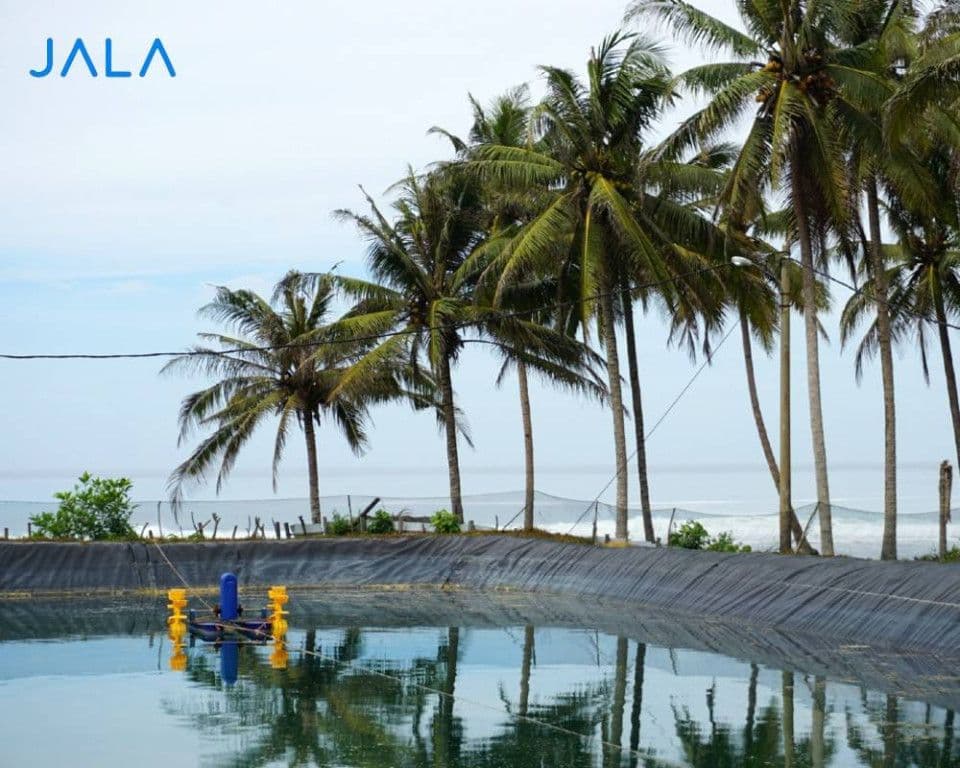
Have you ever experienced stagnancy or even suppressed growth in your cultivation?
This issue might be caused by the decrease of your farm’s carrying capacity. Carrying capacity also relates to the surrounding environment, particularly the water supply and cultivation wastewater disposal.
What is carrying capacity?
Carrying capacity is the ability of the environment to support various activities of living organisms in a balanced condition. It reflects how much an environment can sustain the growth and lives of its habitants.
In aquaculture, the water condition is crucial, and the environment’s carrying capacity refers to sufficient water quality and quantity to sustain the lives of the aquatic organisms. In shrimp farms, carrying capacity is also dictated by the feed availability and cultivated shrimp population.
What happens if the carrying capacity is exceeded?
A shrimp farm’s carrying capacity shows how well it can accommodate all the load along the cultivation process. Maximum carrying capacity is signaled by slowed shrimp growth, more fluctuating water quality, especially DO, as well as build-up of organic matter.
Carrying capacity decreases as cultivation age increases. One of the biggest harms of a compromised carrying capacity is the spread of shrimp disease. Sediments of organic matter in the bottom of the pond can promote the growth of pathogenic bacteria which cause diseases.
Shrimp farms are prone to organic matter build-up. Up-welling caused by currents, siphon activities, sampling, partial harvest, and other factors can affect the water quality, decreasing DO and mixing up toxic materials such as hydrogen sulfide (H2S) dan ammonia.
How can carrying capacity be maintained?
Although carrying capacity decreases as cultivation age increases, it can be maintained with proper planning as well as treatments throughout the cultivation. Here are some steps you can take:
- Plan feed programs properly
If your farm experiences organic matter build-up, you need to fix your feed program. Choose high-quality feed and implement the right program. For example, choose feed which has good stability and attractability. Consider the shrimp’s appetite and weather conditions in determining feed amount.
- Siphon and water exchange
Excessive organic sediments cause a higher ammonia and sulfide gas content. It is important to siphon or suck away the mud from the bottom of the pond.
Moreover, water exchange is a promising strategy to replenish saturated water. However, you need to do it gradually to maintain stable water quality. Ensure that the water you use is free of pathogens and predator stock.
- Use probiotics
Throughout cultivation, carrying capacity can be improved by applying probiotics. Probiotics with various bacterial strains can break down organic matter, competing for pathogenic bacteria in sediments or shrimp, and support shrimp growth.
- Apply biofloc system
In shrimp cultivation, biofloc systems limit water replacement to maintain a balanced C/N ratio. This cultivation method heavily considers carrying capacity in adjusting the cultivation target.
- Do partial harvest
As shrimp size increases, feed competition also increases. This issue is more common in farms with high stocking density. If this issue is prolonged, shrimp growth will reach a plateau. To prevent this, partial harvesting can be done.
- Use aerators
An aerator is one of the technological devices that can be used to maintain shrimp farm carrying capacity. It supplies dissolved oxygen into the water and helps with the chemical degradation of organic matter. Build-up of leftover feed and shrimp metabolic waste can be accumulated with the current created by the aerator. The number and positioning of aerators in the shrimp farm should be carefully considered.
Apart from measures taken before and during cultivation, carrying capacity can be maximized in between cycles. Giving a little time before starting the next cycle allows the pond to ‘rest’ and be cleaned from any remaining waste, such as leftover feed and dirt in the walls and bottom of the pond which takes longer to be degraded naturally.
The surrounding environment’s carrying capacity is also essential!
Cultivation waste contains various nutrients in high concentration, such as nitrogen and phosphorus, which are a by-product of cultivation. This waste significantly affects the surrounding environment and farms, especially if directly disposed of without any treatments.
In low concentrations, farm waste can benefit the environment due to the nutrients. However, when hundreds or thousands of hectares of farms dispose waste directly into water bodies (rivers, estuaries, and seas), it can adversely affect the environmental balance.
This causes a massive decrease of carrying capacity in surrounding environments. Although the environment can heal itself, this process cannot occur if the input is constantly larger than the carrying capacity. While carrying capacity is important in shrimp farms, it is even more essential in the surrounding environment, especially when waste is directly disposed.
A saturated water body causes a decrease in environmental quality, which will affect cultivation activities. Cultivation waste infected with disease will cause disease spread. As you can imagine, drawing water from such a source poses a danger of infecting your own farm.
Therefore, shrimp farm carrying capacity needs to be maintained while conserving the surrounding environment and society. It enables the shrimp farm to be more sustainable, and your business will be able to run longer as well.
Remember that while carrying capacity is important in shrimp farms, it is even more important in the surrounding environment for more sustainable shrimp cultivation.





